Well, the task of being Batman’s sidekick has claimed another life. Young Damian Wayne, the fruit of Batman’s own loins, with killed in a battle with his clone brother in Batman, Incorporated #8. And not in a quick one panel zap, the way we used to do comic book deaths, but in a multi panel pummeling. Since Damian was a little brat for most of his 10 years, some people weren’t that sad. But others were. The reactions have been many and varied. First and most poignantly the entire Batfamily is mourning on next month’s somber covers, as revealed at Buzzfeed.
And there was much talk in the mediasphere as well, although without cool Greg Capullo covers. One thing’s for sure…Damian wasn’t the first Robin to die…and I’m guessing he won’t be the last.
First, author Grant Morrison explained his motives:
I chose to build my story around the basic trauma, the murder of his parents, that lies at the heart of Batman’s genesis. It seemed to me there would be a part of Bruce Wayne that resented his parents for leaving him and especially resented his father for not being Batman that night, so the principal villains were an archetypal bad father figure in the form of Dr. Hurt and a dark mother in the form of Talia, our villain for the concluding chapters of the story.
Like or loathe the story, it was clearly planned for a while.
At Wired, Sean T. Collins investigated the cause of death::
If we were to take a look at the coroner’s report, we’d no doubt find “franchise maintenance” listed under “Cause of Death.” Morrison’s execution of the concept has been excellent, particularly when teamed with artists like Frank Quitely, Chris Burnham, and Frazer Irving, who wring both off-kilter action-scene dynamism and genuine pathos out of drawing Robin like the child he is. But one need look no further than most of the other books that have featured the Dynastic Duo to realize that the role has a limited shelf life outside of Morrison’s control.
It’s tough to imagine “Batman as dad, Robin as his son” taking off in the public imagination to the extent it could be used as the backbone for a blockbuster film, or even an animated series. “Batdad,” as an image and as a set of ideas about that character, simply doesn’t square with his pop-culture profile as an avatar of terrifyingly badass hypercompetence and black-clad angst. This is to say nothing of all the child-endangerment issues we’re already whistling past when we read about Robin, which are only compounded when the child being endangered is Batman’s own son.
When Marvel Publisher Dan Buckley insisted to The New York Times in 2007 that Captain America Steve Roger is “very dead right now,” those last two words didn’t go unnoticed. “Still, these are comic books, where characters have a history of dying and returning,” noted the newspaper of record. Four years later, the New York Daily News couldn’t get halfway through its coverage of the Human Torch’s death before cynically pointing out, “Fans can also be optimistic that The Human Torch will eventually return.
J Caleb Mozzocco knew Damian’s days were numbered:
I certainly didn’t think Damian was going to last too terribly long, and assumed it was only a matter of time before it was revealed he wasn’t really Batman’s son. And/or The Joker killed him (not that I know all that much; I never thought DC would bring Barry Allen or Jason Todd back from the dead, or re-number Action Comics, for example).
Oddly enough, he has at this point been around so long that I just recently stopped expecting him to be written out of the comics.
Chris Arrant points out that Grant Morrison is a serial killer, with many of his own creations dead:
Think back to his first major mainstream superhero book, JLA. In it, Morrison and Howard Porter revived the team in a back-to-basics approach featuring the seven most popular and iconic members. But during that time Morrison also created (with Mark Millar and N. Steven Harris) the Mesoamerican hero Aztek. Launched in his own series — whose first issue teased his impending death — Aztek later joined Morrison’s JLA and was killed in JLA #41, the writer’s final issue.
Former DC editor Mike Gold was glad to see the little brat go:
His obnoxious demeanor isn’t reason I detest(ed) his character. I do not condone his birth.
Batman – Bruce Wayne no longer exists – is the poster boy for obsessive-compulsive. All the Prozac, Zoloft, Paxil, and Lexapro combined can’t help this sucker, and yet somehow we have come to perceive his behavior as noble. If we refused to sell guns to the mentally unstable, Master Bruce wouldn’t make it to his next fox hunt.
WaPo’s David Betancourt just wonders “WHYYYYYYYYYYYY?”
Mike Mayhew feels that the killing of the son reinforces Batman’s immortality:
It started the way it’s supposed to. Batman, the fictional character, outlasted and replaced his creators. But because a company owns him, the natural process stops there. There’s no reason for him to go away. Ever. As long as he continues to make money, the king never dies. He never gets out of the way and he never passes the throne to his heir. That’s what Morrison describes in his essay. The Dark Knight Rises aside, no one besides Bruce Wayne – not Dick Grayson, Damian Wayne, Jean Paul Valley or anyone else – gets to be Batman for long. Batman does not R.I.P. Bruce Wayne always returns.
Tom Bondurant looks at the context of Robins through the ages
I mention all that in order to highlight those long stretches of stability. Most of Dick’s 44 years as Robin weren’t spent on some long-term emotional journey to adulthood. In fact, I would argue that the real story of Dick’s “graduation” began in 1980, when Marv Wolfman started writing Batman and the then-new New Teen Titans.* In both books Dick was eager to establish his independence from Bruce, including dropping out of college and operating out of New York City with the Titans. This estrangement challenged the nature of “Robin” even more than Dick’s physical separation from Bruce, because it forced readers to evaluate whether “Robin” meant anything apart from Batman. Moreover, Batman’s post-Adam West gothic makeover had long since gotten readers used to the idea of Batman without Robin.
Valerie Gallaher questions whether showing the brutal death of a young child is really in good taste.
But here is the big elephant in the room and I’m going to just say it: in the aftermath of the brutal killing of so many other children in Newtown, is this a tasteless story? Or more precisely, is the story itself not tasteless — but the use of it as just another “gimmick” to tickle the mass news outlets (of which I am quite aware I am a part of) into once again realizing that comics exist, tasteless? I only have to point to one of the the NY Post’s headlines for the Robin story, “Holy Hit Job!” — a bizarre nod to the sunny 1960s TV show.
Penultimately, Burt Ward, who once played Robin, reacted with shock and alarm:
Ward tells us, “It’s a terrible choice to kill off Robin. Why bite the hand that feeds you? … Robin should only die in people’s imaginations! Or in a state of primal ecstasy!”
For those who want to compare and contrast with other memorable deaths PW’s Matt White has the 10 Most Memorable Superhero Deaths


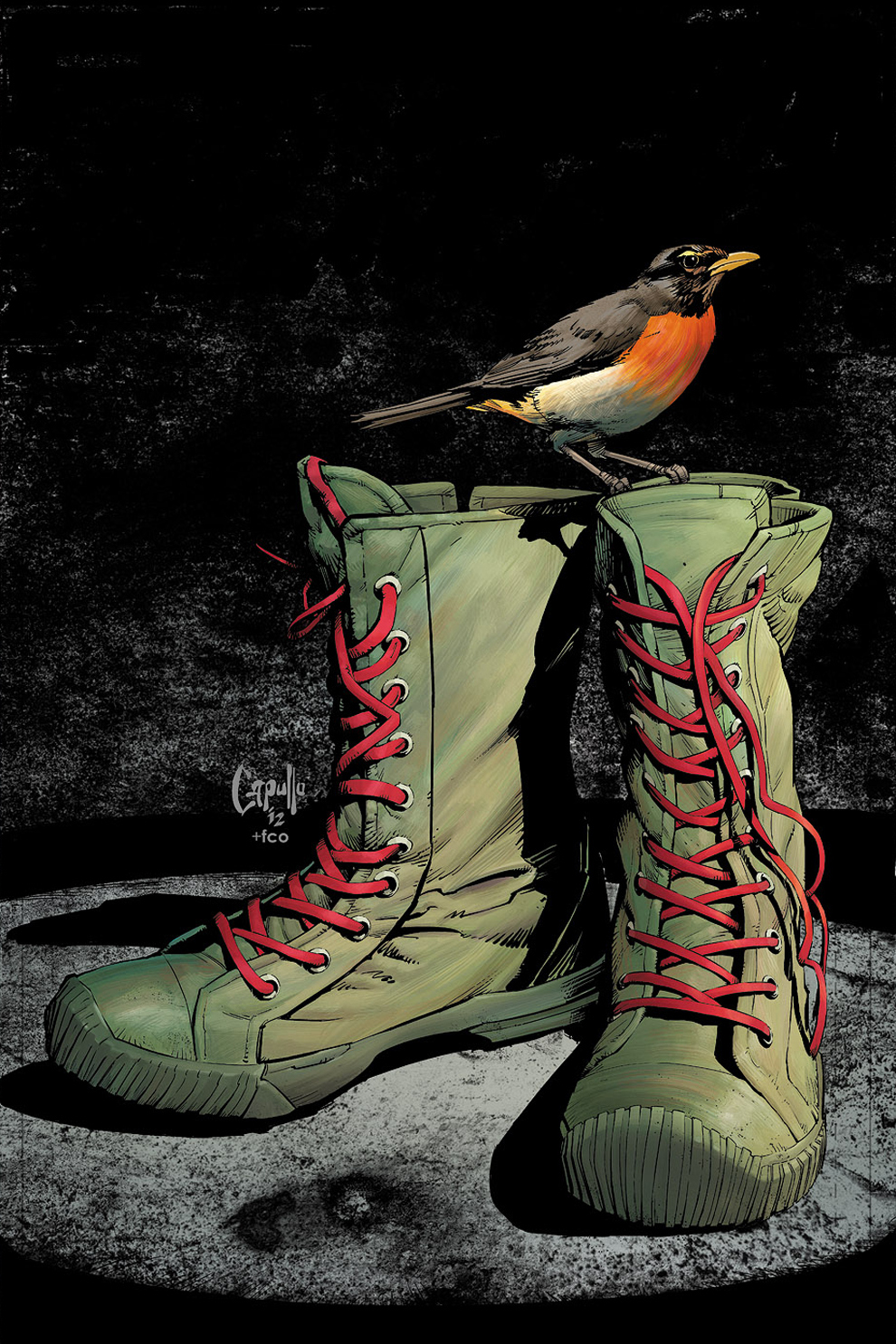
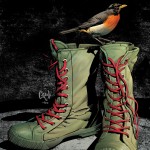
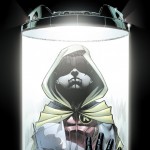
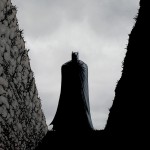
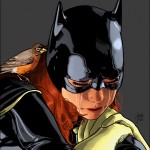
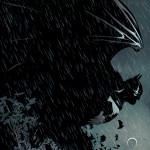
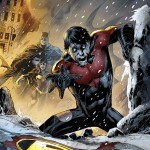
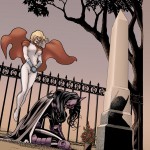
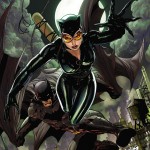
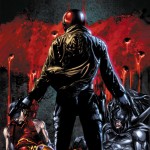
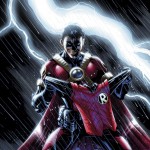
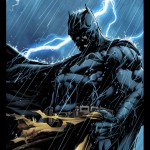
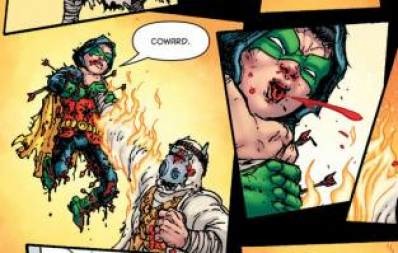
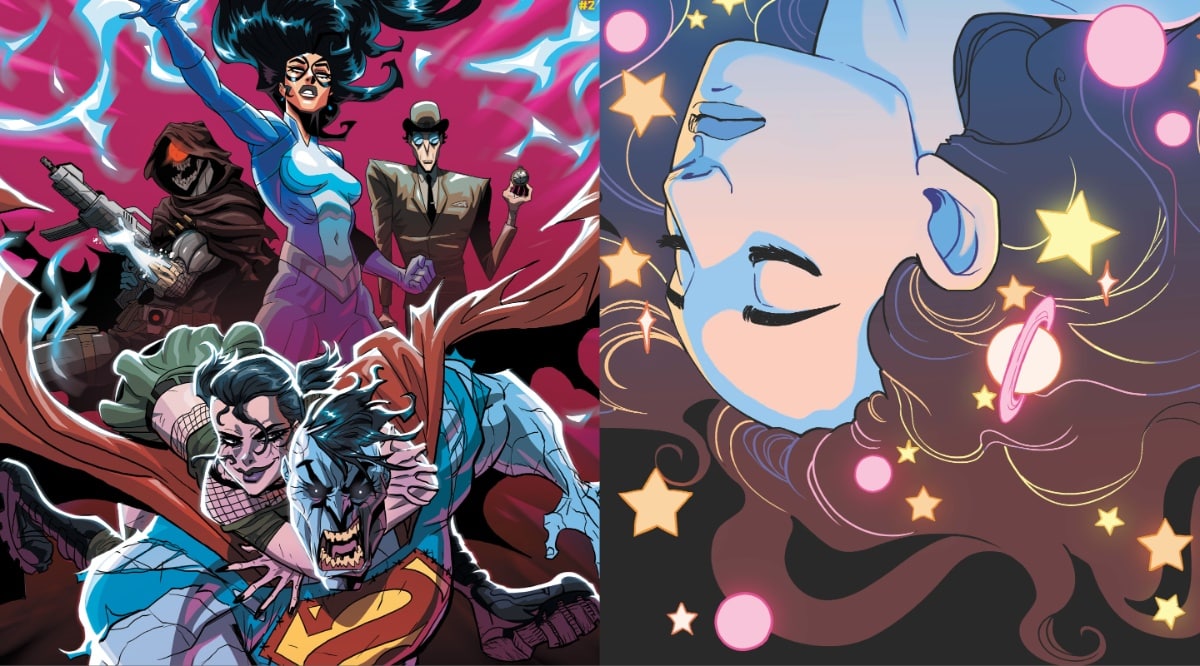
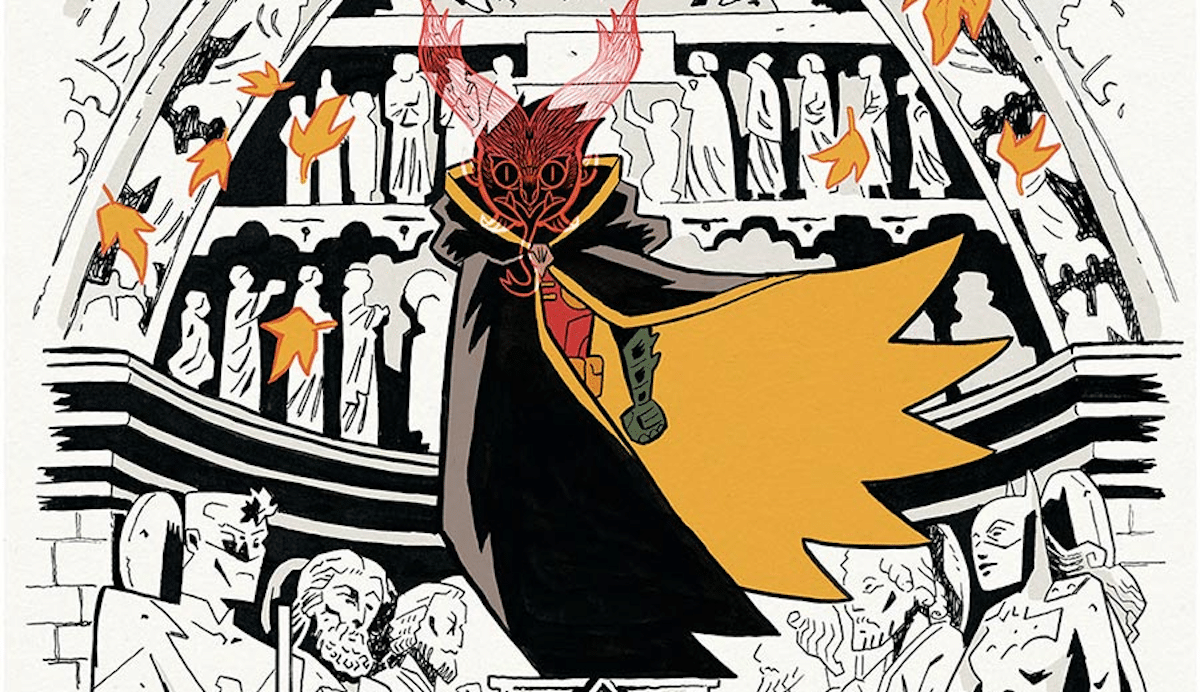
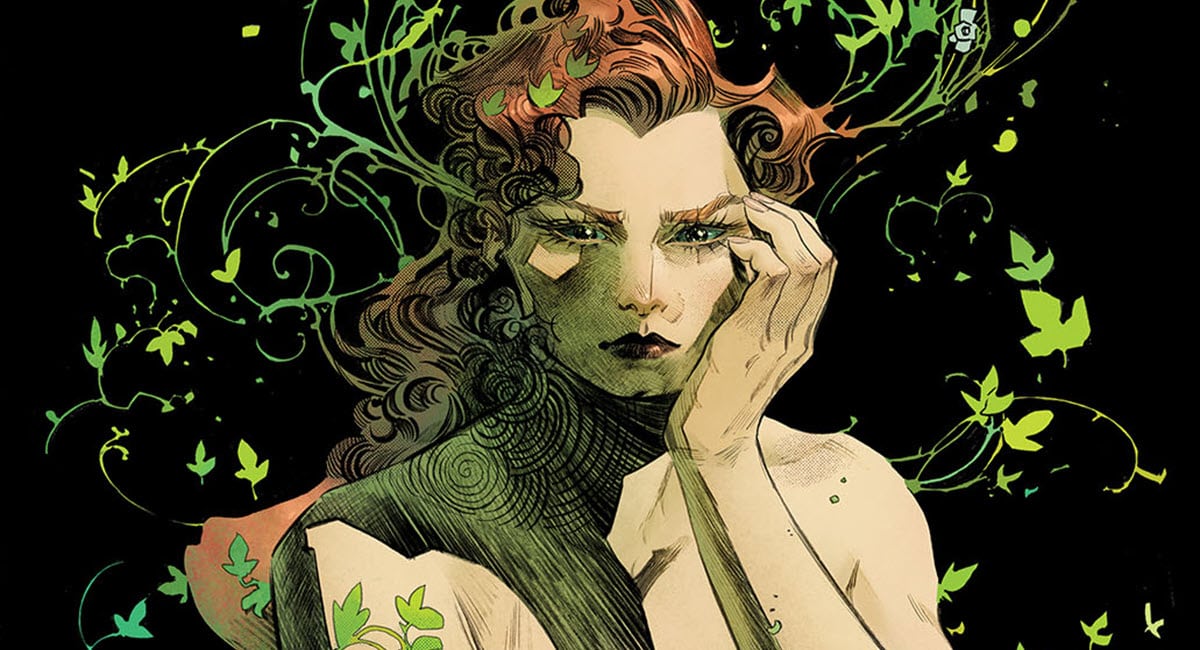
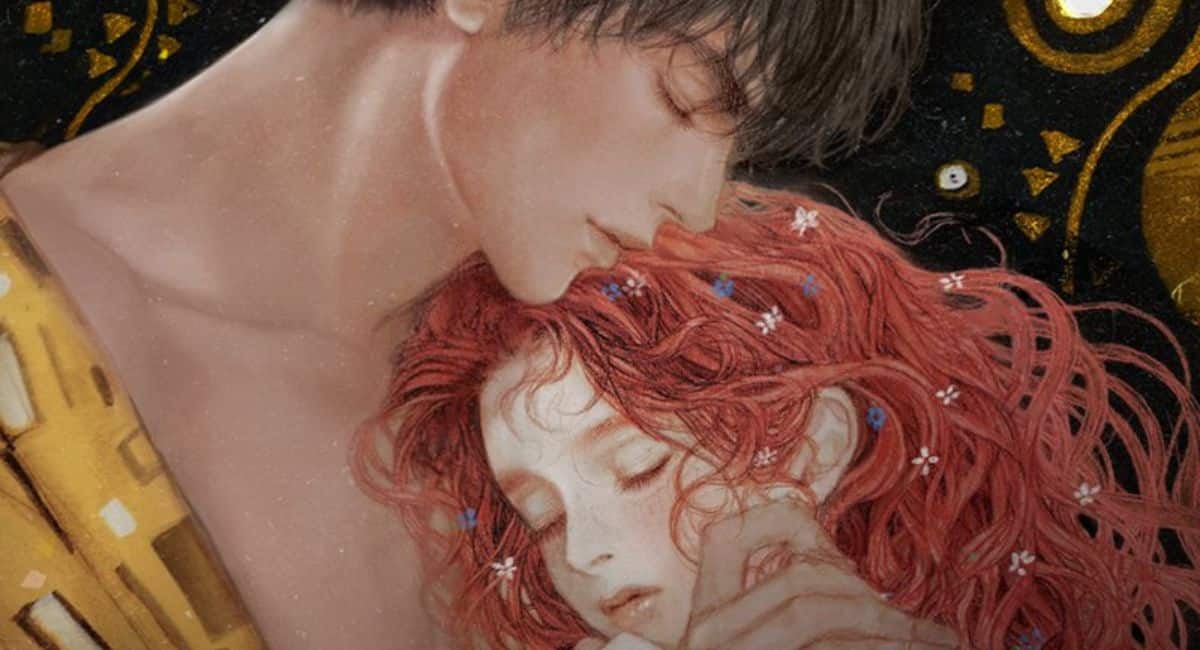


I thought this was well done, but I dislike what ultimately happened.
Except for Peter Parker’s Uncle Ben [and maybe Gwen Stacy], death doesn’t mean anything in comic books.
Except for Bruce Wayne’s parents and Peter Parker’s Uncle Ben [and maybe Gwen Stacy], death doesn’t mean anything in comic books.
Except for the planet Krypton, Bruce Wayne’s parents and Peter Parker’s Uncle Ben [and maybe Gwen Stacy], death doesn’t mean anything in comic books.
Yes… deaths linked to origin stories are nigh impossible to invalidate without risking the reason the character is a superhero to begin with.
Both parents dieing is almost mandatory for becoming a major superhero. If only one parent dies, you become a Disney princess.
But seriously folks, I’ll miss Damian Wayne, and hope they still use the footage they shot for him in Scary Movie 5.
I haven’t seen the actual death issue yet – so I don’t have a lot to say about his demise – but I have never been a fan of the Damien Wayne character let alone Damien as Robin so I for one hope the character stays dead.
My biggest problem with the character is that he is nothing more than a cheap plot device. It’s like – hey, here ya go Batman, you have a son. Say what? From day one I thought that was just really stupid. And from a Robin standpoint here we have a boy who is born into money and power on both sides – matriarchally and patriarchally.
This “Robin” had choices. He could do whatever he chooses and has the means to accomplish any and all of those choices based on the power and influence of his parents. But the one thing that is missing from Damien is the one thing that created Robin – hell, its the one thing that created Batman – TRAGEDY.
Batman and Robin were both created from tragedy, pain, darkness. An undying need, an undying drive to avenge (better yet, revenge) his past with a present and future that will never fully aleviate that pain.
Damien suffered none of these (in my opinion, requirements) to get to his place as Robin. His drive – so to speak – is at best to please Mommy and/or Daddy. Robin is more or less an entitlement in his world. As would becoming Batman. Its just his place in the world based on his birthright.
Robin should be a junior version of Batman – someone who has that drive to avenge the past. The need to fight crime. The need to become something better than what he was.
Damien had none of these things all he had was a mother who told him his daddy was The Detective (as good old Granpa would call him).
For those who liked the character I feel your pain – losing a character you like is tough.
But for me, I just hope that Harper Row ends up as Robin and her story is one worth following – a mystery that slowly developes. But with my luck and the way DC does things now Harper Row will most likely be the daughter Batman never knew he had and Catwoman is the mother.
How many glass tubes of Robin costumes are going to be in the background of Batcave scenes before it starts making Batman look stupid?
Answer: anything past 1 and even that is pushing it.
Not only can DC not keeping going to the well on the creation of Robin’s, it also can’t keep going to the well on killing them off. Even the first time they did it the entire campaign was revolting and the only good thing to come out of it was Tim Drake. But DC’s whizzed that one down their leg to.
There’s also the simple fact that Robin is supposed to be fun and going this route just hangs a needlessly huge lampshade on the impracticality of it to a degree that is not some big brilliant genre deconstruction but rather just violating the fantasy context of the thing for the sake of doing it in yet another attempt at looking dark and “edgy”.
Does no one remember that Grant planned to kill Damien in his first story? Damien was due to die before customers ever read his first appearance. Grant told Newsarama this in 2006 when he was at the beginning of his Bat-epic. Though Newsarama has scrapped their archieves, I could find a discussion of the article in 2009 (as the first issues of “Batman & Robin” were on the stands): http://forums.comicbookresources.com/showthread.php?284447-Morrison-originally-planned-to-kill-Damian-in-quot-Batman-amp-Son-quot
The fact that Red Robin on the Teen Titans cover seems to be all smiling is either a bad art job or just sad.
http://entertainment.time.com/2013/02/28/why-superhero-deaths-have-become-meaningless/
“Why Superhero Deaths Have Become Meaningless.” Time magazine weighs in.
I remember the shock I felt over the deaths of Gwen Stacy (1973), Jean Grey (1980) and Elektra (1982). Now the news of a comic-book character’s death makes me shrug and yawn.
Why is there a Baltimore Oriole on Robin’s boots on that cover of Batman #18?
Um, his grandfather is Ras. Does anyone, anyone who reads Batman not expect him to come strolling out of a Lazarus Pit in the next 18 months. I find this tiresome.
The constant gratuitous death and ressurection cycle is what’s tiresome. It doesn’t matter if there’s a ready made out.
Comments are closed.